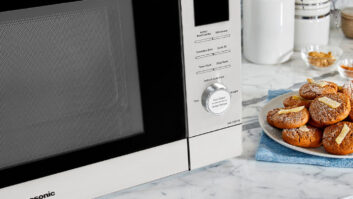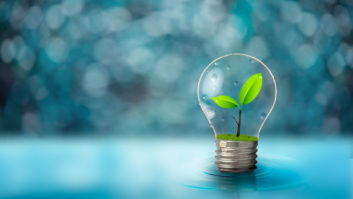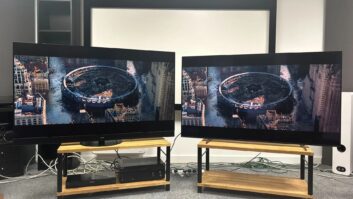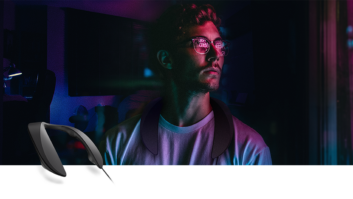Tokyo — Citing the philosophy of their founder, executives of Matsushita Industrial Electric shared details with visiting members of the press about the company’s Earth-friendly environmental impact management efforts, known company wide as the “Eco Ideas” strategy.
The massive company-wide effort by Matsushita — soon to be officially renamed as a company to its more famous brand name, Panasonic — aims to increase the energy efficiency of its products, significantly reduce the company’s carbon emissions, and promote the proper management and disposal of chemical substances used in the production process.
According to Panasonic execs, the Eco Ideas strategy has its roots in the beliefs of company founder, Konosuke Matsushita, who preached the philosophy that the company does not exist solely to make money, but it is also a public entity and should contribute to society through its business activities.
The strategy was codified by Matsushita president Fumio Ohtsubo late last year, when he declared a straightforward three-part commitment on the company’s part “to produce energy-efficient products, reduce carbon dioxide emissions across all manufacturing sites, and encourage the spread of environmental activities throughout the world.”
The strategy was expanded upon by Akira Nakamura, general manager of Panasonic’s environmental planning group, who sat down with visiting press this week at the Panasonic Center here in the Ariake section of the city. Nakamura cited several measurable benchmarks that Panasonic hopes to reach in the foreseeable future, among them the reduction of CO2 emissions of its facilities by 300,000 tons by fiscal 2010, the phasing out of some of the company’s least energy-efficient products, and the increasing of the energy efficiency of its home appliances and devices to reduce the overall power consumption of homes.
Specific efforts in this area include reducing standby power consumption of products through the use of semiconductor switching elements to produce “intelligent power supplies,” and switching to flangeless motors in its washing machines, which cuts consumption by about one half, among many others.
In addition, Panasonic is taking a proactive approach in the field of chemical management, completely eliminating the use of six substances that are prohibited by the European Union’s Restriction of Hazardous Substances declaration in all processes.
On a personal level, Panasonic employees are encouraged to participate in the companies “Love the Earth Citizen’s Campaign,” a vehicle for employees and their families to give back on a local level through practical ecological activities like tree planting and park and beach cleanup rallies. The program was recently expanded to include Panasonic’s approximately 90 facilities in China.
The most visible symbol of the effort is the use of the Eco Ideas logo, which appears on lapel pins, business cards, company literature and more than 95 percent of the company’s products’ packaging.
Here at the Ariake facility, the Eco Ideas strategy is incorporated in the Eco & Ud (Universal Design) House, a prototype residence that incorporates cutting-edge technologies that help deliver on the ecological principles, as well as follow a design philosophy that is user-friendly and supportive of the needs of all people to be healthy and happy.
Based on the prediction of people’s lifestyle in 2010, the Eco & Ud House is designed to reduce the amount of CO2 emissions to one-third of the levels recorded by the average house in 2000. (For photos of the house click here.)
The Universal Design philosophy has six principles that are intended to guide the design of all Panasonic products going forward:
· easy-to-understand operation;
· space to support easy access;
· uncomplicated displays and indicators;
· peace of mind and security;
· natural posture and ease of movement; and
· consideration of how the product is used and maintained.
Among its many advanced technologies, the house incorporates a wind and solar hybrid power-generation system known as “Kaze Kamome,” which runs a security system based on automatic lighting and networked security cameras. The system includes a sensor installed near the entrance which detects every visitor. It can identify family members who carry a cellphone with an embedded RFID tag and unlock the door automatically for them.
At the core of the house’s systems is a polymer electrolyte fuel-cell co-generator that uses small amounts of natural gas to process hydrogen and water to generate electricity and hot water. The result is a heating, cooling and hot water system that cuts CO2 emissions by 37 percent compared with traditional thermal power generation methods, and 12 percent compared with all power sources, according to Panasonic field test testing results.
Panasonic has big plans for the fuel-cell technology, both as a way to cut down on environmental impact and as a viable profit-generating business in the coming years.
The Eco House also features a home energy-management system that, through constant monitoring of energy production and usage, can advise homeowners on how and when to use household appliances such as dishwashers, washers and dryers most efficiently.
Other green technologies featured in the house include efficient LED lighting, humidity-controlling construction materials, next-generation ultra-thin insulation and photo-catalytic tiles that contribute to air purification.
Nakamura stressed that Panasonic is behind the energy conservation efforts for the long haul. “We have a great responsibility as a leading worldwide manufacturer. We have more than 300,000 employees and almost 300 facilities worldwide. Every step we take can have a very significant impact. The environment is one of the top priorities of Panasonic.”













